The topic of this article may not meet Wikipedia's general notability guideline .(August 2022) |
Videssos is a series of fantasy novels by American writer Harry Turtledove.
The topic of this article may not meet Wikipedia's general notability guideline .(August 2022) |
Videssos is a series of fantasy novels by American writer Harry Turtledove.
"Videssos" can mean either the Empire of Videssos, or its capital city. The Videssian Empire is very similar to the Byzantine Empire, and much of its history and geography is analogous to Byzantine history. The main differences are the religion, the existence of magic as a usable force, and some details of the history of surrounding states. These states strongly resemble neighbours of Byzantine Empire – for instance, Makuran is Sassanid Persia and Vaspurakan is Armenia (Vaspurakan is in reality a historic Armenian province). The map shown of the known world in the time of the various Videssos stories is a very loose east-for-west flip-flop of the Mediterranean.
Like Byzantium, Videssos is an absolute monarchy, ruled by an Emperor. The Emperor is assisted by a numerous, influential bureaucracy. The bureaucracy and military are traditionally rivals for power and influence. Even Videssian offices and titles are the same as the Byzantine ones (e.g. autokrator , sebastokrator , vestiarios , drungarios ).
The Videssian emperors and their history strongly resemble the Byzantine emperors.
The Videssian Empire is rather feudal, with powerful landowners wielding great influence. The class of yeoman farmers, who provided much of the best recruits for the military, is dwindling, analogously to what happened at several stages of Byzantine history.
Everything within Videssian life centers around religious beliefs. There are varied types of beliefs from pantheons of gods, spirit/demon worship, and dualist belief. The most widespread belief is in the dualist faith of Phos, the god of light, and Skotos, the dark god. The core of this faith is that Phos and Skotos will battle and only one will emerge. Even in this belief there is nuanced variations that lead to enmity between different countries.
The basic prayer of those who follow Phos is "We bless thee, Phos, Lord with the right and good mind, by thy grace our protector, watchful beforehand that the great test of life may be decided in our favor." To this those of the Duchy of Namdalen append "On this we stake our very souls."
It is postulated by Gorgidas in the Videssos Cycle that the variants of the Phos beliefs have to do with political and ethnic reasons rather than true belief. He states that the Vaspurakanur belief in their direct descent from Phos was a way to separate themselves from Videssos and maintain a separate social structure. The Balancer beliefs are flat out stated to have come out of the barbarian invasions of areas of the Empire. Those who survived these centuries of attacks were no longer certain of the inevitable victory of Phos.
There are no noted variations of the followers of Skotos.
Ancient Egyptian religion was a complex system of polytheistic beliefs and rituals that formed an integral part of ancient Egyptian culture. It centered on the Egyptians' interactions with many deities believed to be present in, and in control of the world. Rituals such as prayer and offerings were provided to the gods to gain their favor. Formal religious practice centered on the pharaohs, the rulers of Egypt, believed to possess divine powers by virtue of their positions. They acted as intermediaries between their people and the gods, and were obligated to sustain the gods through rituals and offerings so that they could maintain Ma'at, the order of the cosmos, and repel Isfet, which was chaos. The state dedicated enormous resources to religious rituals and to the construction of temples.
Monotheism is the belief that there is only one deity, an all-supreme being that is universally referred to as God. A distinction may be made between exclusive monotheism, in which the one God is a singular existence, and both inclusive and pluriform monotheism, in which multiple gods or godly forms are recognized, but each are postulated as extensions of the same God.
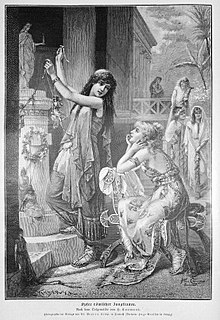
Paganism is a term first used in the fourth century by early Christians for people in the Roman Empire who practiced polytheism or ethnic religions other than Judaism. In the time of the Roman empire, individuals fell into the pagan class either because they were increasingly rural and provincial relative to the Christian population, or because they were not milites Christi. Alternative terms in Christian texts were hellene, gentile, and heathen. Ritual sacrifice was an integral part of ancient Graeco-Roman religion and was regarded as an indication of whether a person was pagan or Christian. Paganism has broadly connoted the "religion of the peasantry".

Georgios Gemistos Plethon, commonly known as Gemistos Plethon, was a Greek scholar and one of the most renowned philosophers of the late Byzantine era. He was a chief pioneer of the revival of Greek scholarship in Western Europe. As revealed in his last literary work, the Nomoi or Book of Laws, which he only circulated among close friends, he rejected Christianity in favour of a return to the worship of the classical Hellenic Gods, mixed with ancient wisdom based on Zoroaster and the Magi.
Bogomilism was a Christian neo-Gnostic or dualist sect founded in the First Bulgarian Empire by the priest Bogomil during the reign of Tsar Peter I in the 10th century. It most probably arose in what is today the region of Macedonia.
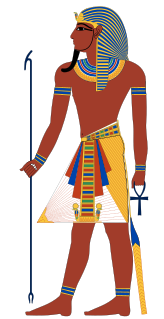
An imperial cult is a form of state religion in which an emperor or a dynasty of emperors are worshipped as demigods or deities. "Cult" here is used to mean "worship", not in the modern pejorative sense. The cult may be one of personality in the case of a newly arisen Euhemerus figure, or one of national identity or supranational identity in the case of a multi-ethnic state. A divine king is a monarch who is held in a special religious significance by his subjects, and serves as both head of state and a deity or head religious figure. This system of government combines theocracy with an absolute monarchy.

Religious practices in ancient Greece encompassed a collection of beliefs, rituals, and mythology, in the form of both popular public religion and cult practices. The application of the modern concept of "religion" to ancient cultures has been questioned as anachronistic. The ancient Greeks did not have a word for 'religion' in the modern sense. Likewise, no Greek writer known to us classifies either the gods or the cult practices into separate 'religions'. Instead, for example, Herodotus speaks of the Hellenes as having "common shrines of the gods and sacrifices, and the same kinds of customs."
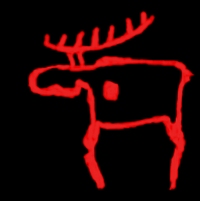
Finnish paganism is the indigenous pagan religion in Finland and Karelia prior to Christianisation. It was a polytheistic religion, worshipping a number of different deities. The principal god was the god of thunder and the sky, Ukko; other important gods included Jumo (Jumala), Ahti, and Tapio. Jumala was a sky god; today, the word "Jumala" refers to all gods in general. Ahti was a god of the sea, waters and fish. Tapio was the god of forests and hunting.

Chinese folk religion, also known as Chinese popular religion is a general term covering a range of traditional religious practices of Han Chinese, including the Chinese diaspora. Vivienne Wee described it as "an empty bowl, which can variously be filled with the contents of institutionalised religions such as Buddhism, Taoism, Confucianism, the Chinese syncretic religions". This includes the veneration of shen (spirits) and ancestors, exorcism of demonic forces, and a belief in the rational order of nature, balance in the universe and reality that can be influenced by human beings and their rulers, as well as spirits and gods. Worship is devoted to gods and immortals, who can be deities of places or natural phenomena, of human behaviour, or founders of family lineages. Stories of these gods are collected into the body of Chinese mythology. By the Song dynasty (960-1279), these practices had been blended with Buddhist doctrines and Taoist teachings to form the popular religious system which has lasted in many ways until the present day. The present day government of mainland China, like the imperial dynasties, tolerates popular religious organizations if they bolster social stability but suppresses or persecutes those that they fear would undermine it.

Tudigong or Tudishen, also known simply as Tudi is a tutelary deity of a locality and the human communities who inhabit it in Chinese folk religion and Taoism.
Paulicianism was a Medieval Christian sect which originated in Armenia in the 7th century. Followers of the sect were called Paulicians and referred to themselves as Good Christians. Little is known about the Paulician faith and various influences have been suggested, including Gnosticism, Marcionism, Manichaeism and Adoptionism. Though from sources gathered by Conybeare in The Key of Truth, it appears that the Paulicians were adoptionist and perhaps non-trinitarian, but not connected to Gnosticism.
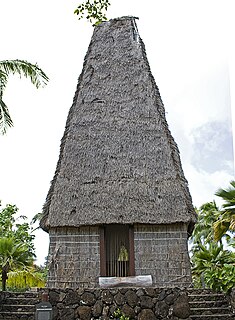
Religiously, Fiji is a mixed society with most people being Christian, with a sizable Hindu (27.9%) and Muslim (6.3%) minority, according to the 2007 census. Religion tends to split along ethnic lines with most Indigenous Fijians being Christian and most Indo-Fijians being either Hindu or Muslim.
Dualism in cosmology or dualistic cosmology is the moral or spiritual belief that two fundamental concepts exist, which often oppose each other. It is an umbrella term that covers a diversity of views from various religions, including both traditional religions and scriptural religions.
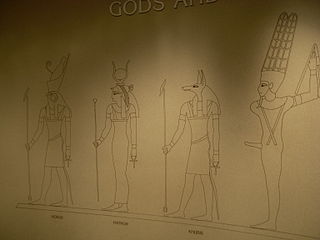
Polytheism is the belief in multiple deities, which are usually assembled into a pantheon of gods and goddesses, along with their own religious sects and rituals. Polytheism is a type of theism. Within theism, it contrasts with monotheism, the belief in a singular God, in most cases transcendent. In religions that accept polytheism, the different gods and goddesses may be representations of forces of nature or ancestral principles; they can be viewed either as autonomous or as aspects or emanations of a creator deity or transcendental absolute principle, which manifests immanently in nature. Polytheists do not always worship all the gods equally; they can be henotheists, specializing in the worship of one particular deity, or kathenotheists, worshiping different deities at different times.
The Videssos cycle is a fantasy novel series by Harry Turtledove and set in the Videssos fictional universe. Turtledove uses his knowledge of Byzantine Empire history and military experience extensively within the story.

In Games Workshop's Warhammer Fantasy and Warhammer 40,000 fictional universes, Chaos refers to parasitic entities which live in a different plane of reality known as the Warp or Immaterium in Warhammer 40,000 and as the Realm of Chaos in Warhammer Age of Sigmar. The term can refer to these warp entities and their influence, the servants and worshippers of these entities, or even the parallel universe in which these entities are supposed to reside. The most powerful of these warp entities are those known as the Chaos Gods, also sometimes referred to as the Dark Gods, Ruinous Powers, or the Powers of Chaos. Similarities exist between the Warhammer idea of Chaos and the concept of Chaos from Michael Moorcock's Elric saga, which also influenced D&D's alignment system. Further similarities can be seen with the godlike extradimensional Great Old Ones of horror writer H. P. Lovecraft's stories.

Heathen Gods in Old English Literature is a historical study of the literary references for several pagan deities in Anglo-Saxon England. Written by the English studies scholar Richard North of University College London, it was first published by Cambridge University Press in 1997. The book was released as the twenty-second monograph in the Press' series, "Cambridge Studies in Anglo-Saxon England", edited by Simon Keynes, Michael Lapidge and Andy Orchard. Prior to the book's publication, North had previously authored other studies of Anglo-Saxon paganism, such as Pagan Words and Christian Meanings (1991).

The mysteries of Isis were religious initiation rites performed in the cult of the Egyptian goddess Isis in the Greco-Roman world. They were modeled on other mystery rites, particularly the Eleusinian mysteries in honor of the Greek goddesses Demeter and Persephone, and originated sometime between the third century BCE and the second century CE. Despite their mainly Hellenistic origins, the mysteries alluded to beliefs from ancient Egyptian religion, in which the worship of Isis arose, and may have incorporated aspects of Egyptian ritual. Although Isis was worshipped across the Greco-Roman world, the mystery rites are only known to have been practiced in a few regions. In areas where they were practiced, they served to strengthen devotees' commitment to the Isis cult, although they were not required to worship her exclusively, and devotees may have risen in the cult's hierarchy by undergoing initiation. The rites may also have been thought to guarantee that the initiate's soul, with the goddess's help, would continue after death into a blissful afterlife.

The Ahom religion is the ethnic religion of the Ahom people. The Ahom people came into Assam in 1228, led by a Tai prince Sukaphaa, and admixed with the local people. The people who came into Assam included two clans of priests, joined later by a third, who brought with them their own religion, rituals, practices and scriptures. The religion is based on ritual-oriented ancestor worship that required animal sacrifice (Ban-Phi), though there was at least one Buddhism influenced ritual in which sacrifice was forbidden (Phuralung). Ancestor worship and the animistic concept of khwan are two elements it shares with other Tai folk religions. There is no idolatry except for the titular god of the Ahom king and though there is a concept of heaven or a heavenly kingdom, there is no concept of hell. It was the state religion of the Ahom kingdom in the initial period.
Bibliography of science fiction, fantasy, historical fiction and nonfiction writer Harry Turtledove: